#angular vs react 2022
Explore tagged Tumblr posts
Text
Software Development vs. Web Development: Which Career is Better?

If you're choosing between software development and web development as a career path, here's the straight answer: both are excellent choices with high demand and rewarding prospects. But the "better" option depends on your interests, skills, and long-term goals. While top-tier institutions like IITs and NITs offer strong foundations in both, many of the best private engineering colleges in Odisha also provide solid programs that prepare students for either path—including colleges like NMIET, which often come up in discussions around tech education in the region.
Let’s Start with the Basics
Software Development is about building computer programs that run on desktops, mobile devices, and embedded systems. This includes everything from operating systems and games to enterprise applications and mobile apps.
Web Development, on the other hand, is focused on creating websites and web applications. This includes the front-end (what users see) and the back-end (the server, database, and application logic).
Though both fields overlap in some areas, their day-to-day tasks and required skill sets can be quite different.
Career Scope & Opportunities
Software Developers often work on large-scale applications, system architecture, cloud-based services, AI models, and mobile app development. Big tech firms like Google, Amazon, and Microsoft hire software developers with strong knowledge of programming languages like Java, Python, C++, and frameworks like Spring, .NET, or TensorFlow.
In contrast, Web Developers may work in design agencies, startups, or large IT companies. The rise of eCommerce, online platforms, and SaaS (Software as a Service) has skyrocketed the demand for full-stack web developers who are well-versed in HTML, CSS, JavaScript, and frameworks like React, Angular, Node.js, and Django.
While software roles may offer slightly higher starting packages on average, web development allows quicker entry into freelance and entrepreneurial ventures. If you're someone who wants to build and launch your own website or startup, web development might feel more rewarding early on.
Learning Curve & Technical Skills
If you're aiming for software development, you'll need a strong foundation in data structures, algorithms, system design, and object-oriented programming. Most competitive coding platforms and tech interviews test heavily in these areas. Colleges that emphasize logical thinking and core computer science principles are a good fit.
In comparison, web development tends to have a faster learning curve. You can build and deploy simple web apps within weeks, which can be very motivating early in your career. However, mastering modern frameworks, performance optimization, security, and scalability still requires serious effort and continuous learning.
Some of the best private engineering colleges in Odisha are now updating their curriculum to include both paths. For instance, institutions like NMIET focus on practical coding labs and project-based learning—whether you're building mobile apps, designing web interfaces, or working on machine learning projects.
Job Roles You Can Expect
Software Development Roles:
Software Engineer
Mobile App Developer
Game Developer
Embedded Systems Engineer
Data Engineer
Web Development Roles:
Front-End Developer
Back-End Developer
Full-Stack Developer
UI/UX Developer
Web App Developer
Companies like Cognizant, Capgemini, and IBM (which also recruit from colleges like NMIET) have openings in both domains, depending on the project requirements.
Industry Demand & Future Outlook
The demand for both careers is strong and projected to grow. According to the U.S. Bureau of Labor Statistics, software developer jobs are expected to grow by 25% between 2022 and 2032. Web development is also expected to grow by 16% in the same period—faster than most other occupations.
AI, IoT, and cloud computing are expanding the horizons for software developers, while the no-code/low-code movement, headless CMS, and progressive web apps are shaping the future of web development.
It’s worth noting that companies today appreciate hybrid skill sets. A web developer who understands backend logic or a software engineer who can deploy code via cloud platforms stands out.
Which Should You Choose?
Here’s a simple way to decide:
Go for software development if you love problem-solving, want to build complex systems, and enjoy algorithmic thinking.
Pick web development if you enjoy creativity, visual design, rapid prototyping, and like seeing results fast.
Neither path is inferior. What matters is consistency and continuous learning.
If you’re still unsure, choose a college that allows you to explore both. For example, a student from a Bhubaneswar-based institute like NMIET might start with web development projects in the first year and transition to mobile app development or AI systems by their final year. That’s the beauty of today’s learning environment—it's flexible if the foundation is strong.
Final Thoughts
Software development and web development both offer exciting, future-proof careers. Your choice should align with your interests, not just industry trends or package comparisons. Fortunately, many of the best private engineering colleges in Odisha offer specializations, hands-on learning, and placement opportunities in both domains.
Whether you're aiming to work with a global tech giant or build your own digital product, both paths can take you there—as long as you're ready to learn, build, and adapt.
#best colleges in bhubaneswar#college of engineering bhubaneswar#best engineering colleges in orissa#best engineering colleges in bhubaneswar#best private engineering colleges in odisha#best engineering colleges in odisha
0 notes
Text
Why AngularJS Is Still Relevant in 2025

Introduction
With increasingly more new frameworks and libraries sprouting up in the field of web development, developers often question why AngularJS is still relevant in 2025. The earliest front-end framework to be developed was AngularJS, a project by Google in 2010, which gave this advancement significant momentum. However, newer frameworks like Angular (2+), React, Vue.js, and others have emerged, leading many to wonder if AngularJS will continue to stand strong in the years to come.
Some would argue that it is now officially outmoded. However, this article sees great value in some of the areas in which AngularJS leaves quite a mark. It thus examines the reasons AngularJS is even to be considered in 2025 by businesses and developers.
The Legacy of AngularJS
AngularJS opened whole new vistas in web development through two-way data binding, dependency injection, and a modular architecture. It provided the niche for those developers who wanted to create dynamic, single-page applications (SPAs) with speed.
Some of the most significant features that made AngularJS so popular would be:
Real-time updates with two-way data binding.
MVC architecture for structured development.
Directives and reuse components for modular applications.
Dependency Injection to simplify the coding management.
After Angular 2+, Angular has not been a favorite with clients anymore. Most still believe in its potential for enterprise applications and legacy systems.
AngularJS vs. the Modern Frameworks
Angular: as well as React and Vue.js, has improved performance and modularity as well as developer experience. Still, AngularJS is in no way inferior:
Scope for small projects most of them.
Incumbent integration with old enterprise systems.
The adult ecosystem built with well-documented solutions.
Cost of migration is significantly less as compared to rewriting the whole application.
Reasons AngularJS Still Holds Relevance in 2025
1. Stability, Long-Term Projects
Many applications that exist in enterprises are still running quite well on AngularJS. Their rewriting comes at a mountain of costs and time, thus making AngularJS a stable as well as a very sensible option.
2. Great Community Support
Even after active development has ended from Google, the open-source community will continue to somehow fix those bugs and provide solutions and security patches. Tons of resources are still available online, such as forums, documentation, and third-party libraries.
3. Mature Ecosystem
Life goodness in AngularJS as a well emergent ecosystem has many third-party tools, extensions, and libraries through which it comes to pass, enabling the developers to build and maintain applications without reinventing the wheel.
4. Cost-Effective for Businesses
Making a switch to another framework might not be quite feasible for organizations which have current applications integrated with AngularJS. On the other hand, it can be more cost-effective for many businesses to maintain and optimize the ones they already have than migrating.
5. Rapid Prototyping and Development
AngularJS remains sound ground in prototyping and developing Minimum Viable Products (MVPs) quickly because of its very easy setup and structure.
Google's protracted support for Angular
In 2022, Google officially ceased long-term support for AngularJS; however, the open-source community and enterprise support solutions still have security updates and patches available. Some businesses have desks corporates extended support options to secure applications within their environments.
Best practices to maximize the advantages of AngularJS development.
If you are using AngularJS, the following activities will help keep your projects up with the times:
Optimize I/O using lazy loading and caching.
Hybrid includes applications that mix both Angular (2+) and AngularJS.
Keep the dependencies up to date for security and stability.
The Future of AngularJS in the Industry
Though the star seems to be fading, AngularJS will still find its way in certain legacy systems and few enterprise applications. The profile of the developers not familiar with AngularJS won't disappear overnight, thus making it worthwhile to maintain such skills to keep older applications.
Finals
AngularJS is no longer going to be as cutting edge as it once may have been, but there is certainly still life in the old girl. Legacy applications will find their usefulness in 2025; maintenance will be cheap, and development will be quick. Newer frameworks have stolen the limelight now, but there is still space for AngularJS in the development space.
Location: Ahmedabad, Gujarat
Call now on +91 9825618292
Visit Our Website: http://tccicomputercoaching.com/
#AngularJS in 2025#benefits of AngularJS#Computer Training Institutes in Ahmedabad#future of AngularJS#TCCI-Tririd Computer Coaching Institute
0 notes
Text
Which is More Powerful, AngularJS or ReactJS?
Today, businesses seek tools and frameworks to build dynamic and engaging user interfaces.
The two prominent web app frameworks that are extremely used are- AngularJS and ReactJS. Each framework has unique strengths and specialties, catering to diverse project requirements and offering advanced tools and features to build modern-age web applications.
Whether you are a beginner or an experienced developer, you must understand these two popular frameworks, AngularJS vs. ReactJS.
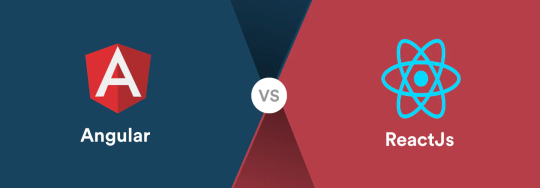
Source- https://www.simform.com/blog/angular-vs-react/
In this blog, we will explore the common differences: Angular vs. Reactjs and where to use which framework.
Reactjs: Learn Once, Write Anywhere
ReactJS is a powerful JavaScript library for building user interfaces in web applications. It's known for its efficiency and uses a component-based approach, making UI development straightforward and organized.
React's virtual DOM ensures fast rendering by updating only the necessary parts of the webpage. JSX simplifies writing HTML within JavaScript, improving code readability. With one-way data binding, React ensures predictable data flow, making it easier to maintain and debug applications. These features make ReactJS a popular choice among developers for creating responsive and dynamic web interfaces.

Source- https://bestofjs.org/projects/react
Key features-
Declarative views
JSX advantage
Component-based
Virtual DOM
One-way data binding
Building blocks flexibility
Advantages of Reactjs-
ReactJS provides several benefits:
Developers can create reusable and predictable code.
Debugging is simplified with declarative views.
It reduces ReactJS Developer development time significantly.
It enhances developer productivity.
Transitioning between different React versions is seamless.
React Native facilitates mobile app development.
Updates are faster with server-side and front-end rendering support.
The UI is efficiently built for improved load times and performance.
It integrates smoothly with various third-party libraries and tools.
Hire the best Hire Reactjs Developers from OnGraph for advanced interfaces.
What is Angular?
Angular is a robust platform and framework for web development, built using TypeScript. It uses a component-based architecture to create scalable web applications. Angular accelerates front-end development with integrated libraries for tasks like client-server communication and routing. It comes with tools that work well for projects of any size, from small apps to large enterprise ones.

Source- https://bestofjs.org/projects/angular
Key features-
Two-way data binding
Dependency injection
Virtual scrolling
Angular CLI
Built-in libraries
Advantages of Angular-
It promotes strong encapsulation and follows an intuitive application structure.
Facilitates clean code development, enhancing maintainability.
Simplifies building, testing, and updating applications.
Includes built-in features like RxJS and Angular CLI for efficient development.
Built-in support for HTTP, AJAX, and Observables streamlines data handling.
Enables rapid server-side rendering and supports views without browser-side rendering.
Parallel component execution reduces the lines of code needed.
Boosts developer productivity and enhances application performance overall.
Also read: 13 Best React Frameworks and Libraries to Use in 2024
Angular vs. ReactJs: Tabular Difference

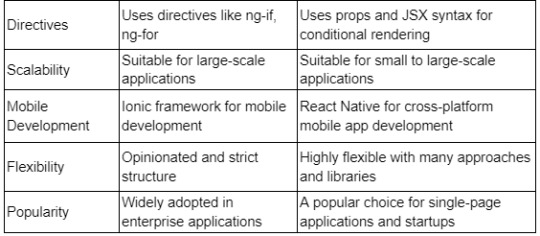
Detailed Comparision: Reactjs vs. Angular
1. Popularity
Both Angular and React have gained popularity in the developer community. React leads with 203k stars on GitHub and ranks second in a 2022 Statista survey on the most used web frameworks worldwide.
Angular, initially released as AngularJS, gained fame for single-page applications. Its redesign as Angular 2 in 2016 introduced new features, solidifying its maturity. However, React's rendering optimizations, virtual DOM, and easy component reuse have consistently made it the preferred choice for dynamic web applications.
2. Performance
Both Angular and React excel in building high-performing web applications, each with its unique strengths.
Angular prioritizes optimizing coding practices and performance enhancement through features like optimized digest cycles and $cacheFactory for efficient data memorization and recalculation. It uses real DOM with a sophisticated change detection mechanism that accelerates web app rendering.
On the other hand, React leverages its virtual DOM, which enables faster updates and data refreshes without rewriting the entire HTML document. It promotes component reusability across projects, enhancing developer productivity and maintaining code quality. These capabilities ensure both frameworks deliver efficient, scalable solutions for varying project complexities.
Hire a React JS development company for next-level React JS development services.
3. Data Binding
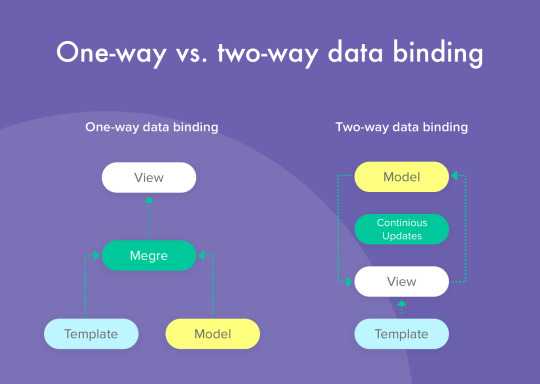
Source- https://www.tabnine.com/blog/angular-vs-react/
Angular and React handle state management differently. Angular uses two-way data binding, meaning changes in interface elements automatically update the model and vice versa. This simplifies building interactive interfaces without extra callbacks, making it ideal for complex applications like ERPs.
React, on the other hand, employs one-way data binding, where updates to the interface occur after the model state changes. This gives developers more control but requires managing state with libraries like Redux for complex applications. While Angular automates data binding, React provides flexibility with precise control over the application state.
4. Server-side Rendering
Angular: With server-side rendering, Angular pre-renders the application to create a static view before it becomes fully interactive. It optimizes server-side performance by efficiently using JSON and client-side caching, minimizing client-server communication.
React: React supports server-side rendering easily, making applications more SEO-friendly. It uses functions like RenderToString for this purpose, offering flexibility that sets it apart from other JavaScript frameworks.
5. Testing
Angular: Testing in JavaScript can be challenging due to its dynamic typing, requiring thorough testing to ensure code quality. Angular simplifies testing with features like unit code isolation and dependency injection, which facilitate easy component decoupling and mocking. It offers comprehensive testing and debugging tools within a single framework setup.
React: Testing in React involves mocking parts not present in testing environments to ensure reliable results, particularly in data-fetching scenarios. React provides predictable tests with robust mocking functions. It integrates test suites into the development process, using test runners like Mocha, Ava, and Jest for efficient test execution alongside ongoing development tasks.
6. Optimizing bundle size
The size of the initial bundle file downloaded when loading a webpage significantly affects how quickly the page displays. Both Angular and React developers focus on optimizing this bundle size for better application performance.
Angular: Angular applications require compilation before they can run in a browser. This compilation ensures that Angular's components and templates are understood by browsers. However, larger bundle sizes can slow down loading times. To speed up rendering, developers can use Ahead-of-Time (AOT) compilation. Although not the default, it can be activated through Angular CLI in production mode. AOT converts Angular's HTML and TypeScript code into efficient JavaScript during the build phase, improving load times.
React: Bundle size is crucial in React, especially as applications grow. It's essential to continually analyze and optimize the codebase to maintain performance. As new pages and features are added, the initial bundle size can increase significantly. Techniques like code-splitting and compression are vital for optimizing bundle sizes without slowing down the application. These methods help manage large app sizes effectively in React development.
7. Learning curve
Angular: Angular is extensive and dynamic. Initially, it covers fundamental topics like directives, modules, components, services, and dependency injection. Learning Angular may feel challenging at first due to its steep learning curve, especially compared to React.
React: React focuses on writing components, managing internal states, and using props for configuration. It may seem unfamiliar initially, but it's straightforward and doesn't add unnecessary complexity. Learning React's basics, along with state management and routing, prepares developers well for building applications.
Choosing between Angular and React depends on your project's requirements. Angular excels in solving complex problems in large-scale applications, while React's simplicity and flexibility have made it increasingly popular among developers. Both technologies offer robust features, tools, and performance capabilities, making it a tough choice for development teams.
When to Choose Angular vs. React
Angular
Angular excels in speeding up front-end development and is favored for creating robust, data-driven web applications. Maintained by Google, it offers stability and extensive community support. Here are scenarios where Angular is ideal for-
Designing, maintaining, and scaling large and complex applications due to its component and directive architecture.
Developing feature-rich elements and customizations efficiently.
Building enterprise-scale projects without needing extensive third-party integrations, could complicate development.
Choose Angular if you:
Need to create enterprise-grade applications with extensive features.
Manage projects of medium to high complexity.
Have developers skilled in languages like C#, Java, and Angular versions, ensuring high productivity.
Aim to develop applications like video streaming platforms, e-commerce sites, or real-time data apps.
React
React focuses on handling the view layer and excels in creating reusable UI components. It's known for its speed in updating data without reloading the page, originally developed by Facebook and widely adopted in large-scale applications like Instagram. Ideal use cases for React include:
Building customizable and interactive app solutions.
Creating apps with multiple events or shareable elements.
Projects where developers are proficient in JavaScript, HTML, and CSS.
Choose React if you:
Want to develop personalized applications tailored to specific needs?
Require dynamic and fast-loading interfaces for social networks, data dashboards, or retail apps.
Plan to build cross-platform mobile applications efficiently.
Understanding these distinctions will help you choose the right framework based on your project requirements and the development team's expertise.
Companies Using Angular vs. Reactjs
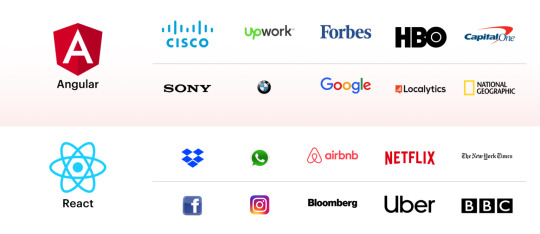
Source- https://www.simform.com/blog/angular-vs-react/
Angular or React - Which is Better?
Both Angular and React are widely used front-end technologies. While Angular offers great benefits, React stands out as the preferred choice. It has large community support and features like Virtual DOM and rendering optimizations that give it an edge over Angular.
React also makes version migration seamless and has a straightforward installation process. Overall, React streamlines development, reduces errors, and offers robust solutions. When choosing between React and Angular, consider your project needs and functionalities. For professional JavaScript development services, feel free to reach out to us confidently.
Connect with OnGraph, a leading React JS development agency for building exceptional front end and the best React JS development service.
Content Source URL: https://www.folkd.com/entry/56745-which-is-more-powerful-angularjs-or-reactjs/
#IsReactorAngularmoreindemand#ShouldIlearnAngularorReactin2024#reactjs#angularjs#DoesAngularorReactpaymore
0 notes
Text
Choosing the right JavaScript frameworks is a real confusion. Especially when you have a lot of options that are super resourceful and capable of facilitating the project requirements. But choosing the one for the right set of projects demands knowledge of several critical aspects. We have covered some of the essential points in this post by making a fair comparison of Angular vs React. Both can be the right frameworks that are great for building modern mobile and web applications with component-based architectures. Choose the one that best suits your project functionalities, preferred programming paradigm, project workflows, and the skills of your developers.
0 notes
Photo
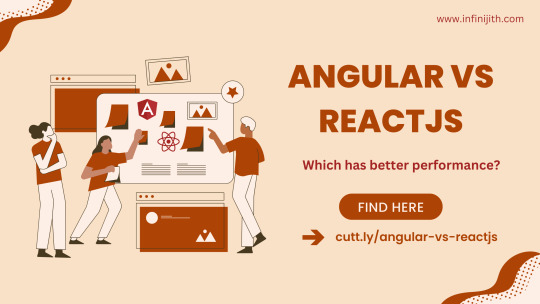
Which has great performance? Angular or React?
Since Angular has two way data-binding, every binding has a watcher to tracker modifications whereas React has single data-binding. As well Angular uses regular DOM and React uses virtual DOM.
Due to bidirectional binding and regular DOM, Angular has performance issues and React has great performance than Angular. Hence React is the best front-end technology for developing dynamic web apps.
But it does not conclude that React is better than Angular. To know the full differences between Angular and React, check our article.
https://www.infinijith.com/blog/framework/angular-versus-react
#angular vs react#angular versus react#angular vs react performance#angular performance vs react#angular vs react 2022#difference between angular and reactjs#angularjs vs reactjs
0 notes
Link
Difference Between React.js vs Vue.js – Here we are comparing React.js and Vue.js, both are most popular JavaScript-based open source frameworks for building user interfaces.
#react.js vue.js#vue vs react#vue js vs react#react vue#react vs vue vs angular#vuejs vs react js#vue vs react 2022#react or vue#react angular vue#reactjs#vuejs
0 notes
Text
Technology Update
Front-End Developments Trends to Watch in 2022
Front-End Development hasn't always gotten the respect it deserves compared to Back-End Development.
Many engineers used to look down on JavaScript, but times have changed. Web applications are growing rapidly, mainly due to the development of open-source tools. This development has moved us farther away from jQuery and has made almost every tech company use the latest JavaScript and tools like ESLint, Babel, and Webpack.
Nowadays, the Front-End is moving at a speed that makes it hard to follow. This post is all about catching up with the directions of this development area in 2022. Perhaps you will find something for yourself in these trends.
Svelte is Gaining Popularity
Svelte is a relatively new tool, which in theory started much too late to be able to have a chance against React, Vue, and Angular. But it's steadily gaining popularity at an unprecedented pace.
In 2021, Stack Overflow Users announced it as the most loved front-end framework. But Svelte is more than that. It is a compiler that builds an optimized front end. Svelte is not imported into the application like other popular frameworks. Instead, code written in Svelte gets compiled into pure JavaScript. This allows Svelte to win in terms of speed against frameworks such as React or Vue.
Using the Svelte framework is very easy. Here is an example of how you'd use state + forms:
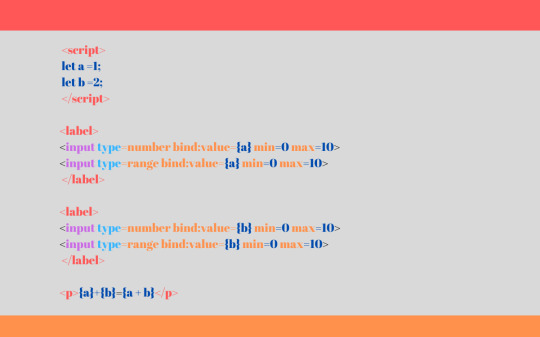
Simple as that! Notice three things here:
Forms are handled in a simple, elegant way, like in the old days, before the SPA frameworks. There is no need to attach onChange props to the inputs.
Markup and logic lives side by side, encapsulating the logic and a visible layer.
State is easy to manage.
No wonder the framework is gaining traction in the community. It is only a matter of time before new popular platforms are created in Svelte.
React, Vue, and Angular are here to stay!!
I started my adventure with the Front-End just before the premiere of Angular 2, about six years ago. I can’t count how many times since then I have read that Vue, React, or Angular is dying.
The truth has turned out to be quite different, though. Each of these three frameworks has grown in popularity since its inception.
Here is the chart (Source: Npm Trends). It is worth adding that every sudden drop on the chart is there because of December.
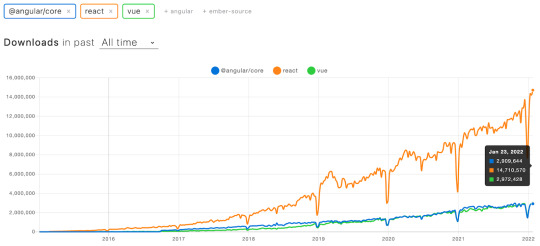
Angular vs React vs Vue download trends
Take a look at the chart above. Notice that Angular has grown in popularity by a factor of over ten. React and Vue grew even faster. All three frameworks support pretty much the same use cases.
This means no matter which of the three frameworks you choose, you can expect it to be used and supported for years to come.
It’s worth noting that React didn't have any significant changes in 2021. Yet the pace of its adaptation is astounding. It is likely because of the ecosystem around the technology. React has the largest selection of libraries and supporting frameworks.
Two examples worth mentioning are Next and Gatsby. The latter is one of the perpetrators of the next trend.
Frameworks need to support both Static and Dynamic Pages
Let's establish what Static and Dynamic Pages are in practical terms.
Dynamic Pages fetch and process the content when the user opens them. Static Pages are per-defined during the build time. They become separate, generated files on the disc. They can look just the same as dynamic, but the user's browser has less work to do.
If you have a shop, you can have a single dynamic product page, or thousands of static product pages, one for every product.
This means that Static Pages are more performant for users, but take a lot longer to build. The reason for abandoning Static Pages was the popularization of the React and Vue type Single-Page Application (SPA) Frameworks. They also restored them to favor.
Dynamic content that SPA's typically generate is much slower than a ready-to-display one written in HTML. The difference is especially big when the page is fetching data from the server. A Dynamic Page would typically have to download and process such data.
This resulted in giving birth to Static Pages in SPAs. Gatsby tackled this problem by building a framework and infrastructure for Static Pages in React.
A website like a blog, portfolio, or even a course platform like ‘freeCodeCamp’ will be much faster static. Even server-side rendering, as is usually the case with Next.js, does not guarantee better speed (Source: Sidney Alcantara).
Focus on time to first content paint results in a large number of solutions for generating Static Pages in other frameworks, such as Vue or Svelte.
On the other hand, Static Pages are hard to scale for millions of pages. If you are building an app with a lot of dynamic content like user profiles, you are probably better off using Dynamic Pages. Both ways of handling content are here to stay.
Platforms turn single developers into entire IT departments
Recent years have brought a flood of platforms that speed up Font-End Development. This is huge because it allows small teams to move fast.
You can easily implement video using Twilio or Agora.io. You can add authentication in no time using Firebase, Amazon Cognito or Okta (Okta also acquired Auth0).
Deploying Font-End code automatically and globally is especially worth talking about. There are three go-to solutions: Vercel, Gatsby Cloud, and Netlify. They can turn one Font-End Developer with an GitHub account into the entire DevOps Department in 5 minutes. At the moment of writing, all three platforms offer a relatively similar average loading times (Sources: Netlify vs Vercel, Netlify vs Gatsby Cloud).
Gatsby Cloud is React only but makes working with countless Static Pages almost too easy. If you are building a Gatsby app, it's probably your best bet.
Vercel supports the major frameworks, including server-side ones, like the company founders' own framework, Next.js. If you are working on a server-side rendered app, Vercel will make your life a lot easier.
Netlify focuses on client side frameworks, like pure React and Vue. It offers a wide range of useful tools such as ready-to-use forms, authentication and server-less functions. I believe it is the best choice for the traditional, client side apps.
One underdog worth mentioning is Shuffle.dev. It can create a professional website layout randomly, in seconds. It has a relatively large selection of themes and CSS frameworks and adds new features and content on a weekly basis.
Front-End Optimization is key
The Front-End has come full circle in recent years. Light sites turned into heavy platforms with long render times. Some people may still remember when Slack used the developer version of React (Source: Robert Pankowecki). The trend to make SPAs faster has been around for years but is still gaining momentum.
Libraries that negatively impact the performance, like Moment.js, are replaced by their lighter, performant counterparts such as Day.js. Others get refactored to reduce the bundle size. Examples include Material UI and Lodash.
Sentry, the market leader in error logging, only started working on bundle size optimization a few months ago. Throughout the front-end ecosystem, there is a growing emphasis on using lazy loading, rendering the front end on the server-side, or using CSS files instead of styling the application with JavaScript, as was the case with, for example, styled-components.
Tailwind has gained much popularity recently and, in 2022, it will surely remain popular. It handles reducing the application load time like almost no other CSS tool.
That being said, it has a steep learning curve. The Tailwind code is often hard to read.
I highly recommend trying Linaria too. Linaria combines the advantages of styled-components and the speed of using static CSS files.
Notice how you can use JavaScript in styles. It is also possible to reuse styles since they are regular JS constants. The code gets compiled into a CSS file during the build process.
This results in a combination of a great developer experience and a blazing-fast front-end.
Conclusion
I hope this article was fun to read and you’ve found something valuable here.
Until next time!
#programm#update#2022#tech#fontenddeveloper#techinfo#tech2022#developer#javascript#fontend#css#jquery#eslint#webpack#script#babel#vue#react#development#programmer#coding#tech news#newbies#software#softwareengine
0 notes
Text
Angular vs React: Which JS Framework Is Better?
Angular vs React: Which JS Framework Is Better?
2022-09-05 08:24:55 Currently, there are 1.9 billion active websites with 4.6 Google searches per day and more than 5.4 billion unique Internet users. To date, the market size of the Web Design Services industry is equal to $11 billion, with the total number of web developers and designers in the US expected to increase to 205,000 in 2030 from 178,900 in 2020. The revenue in the application…
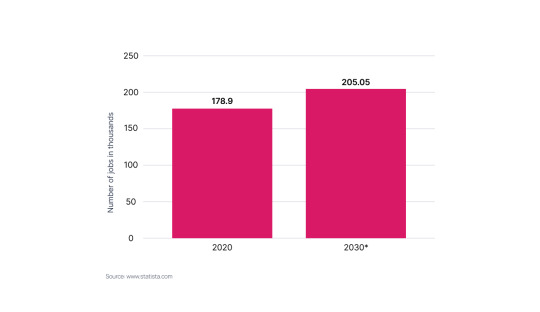
View On WordPress
0 notes
Photo
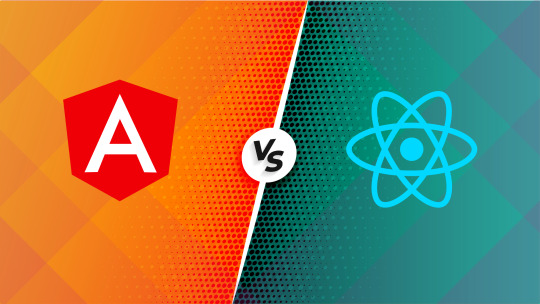
Angular vs. React: Which One to Choose for Your Startup in 2022?
0 notes
Text

Top 5 Python Frameworks And Libraries | Hyperlink InfoSystem
Python has been one of the most trending languages among web and app developers. Python has been around us for more than 3 decades but still, the popularity of this language has been in intake throughout the years. This easy-to-use programming language has proved its worth over the years.
Even though the world still compares Java vs Python, every web developer around the globe knows the fact that they both prove their worth at a time. As we know much more about Java development, it’s high time we discuss a bit more about how you can enhance app development through various frameworks and libraries.
Also Read | Top 7 Web Development Tools & Trends To Expect In 2022
Top 5 Python Frameworks
If you do not know the Python frameworks are divided into two major categories.
Micro Framework — If you want to develop small or medium size mobile applications, a Micro framework is one of the top choices.
Full-stack Framework — If you want an application with a complex nature containing extensive libraries, data management systems and so on then you should surely go for the full-stack framework.
Anyway, for what reason do we have to know the difference between these two kinds of frameworks? The explanation is simple. Python frameworks are arranged in light of these orders. This will help the individuals to choose the best frameworks which they should use for their development project.
1) Django
Django framework is one of the best frameworks for huge applications as it facilitates web developers to build complex web applications with minimum code structure. This open-source python framework has been one of the top choices for web developers and experts around the globe when it comes to large web app development.
Django is a full-stack framework that contains all the necessary features and functionalities for complex web app development. One of the reasons for the popularity of the Django framework is that it works based on the DRY (Don’t Repeat Yourself) principle. Django supports ORM ( Object Relational Mapper) to map objects to database tables which controls the database through an object-oriented paradigm.
2) Flask
A micro-framework, Flask is a top choice when it comes to strong web application development. It has individual parts that developers can trade out. If you have to handle critical web app development then, Flask can be your go-to choice. It has a few one-of-a-kind features and functionalities that take out inconsequential decisions and processes.
It turns out best for medium-to enterprise-size web app development projects with its lightweight and measured app design. Likewise, in cases where Django can not take special care of a web project, Flask is an effective option.
Also Read | React vs Angular For Web Development
3) Bottle
Another python Micro-framework, Bottle is the best choice for APIs development and implements single-source documenting. Since it is a micro-framework, it has no conditions besides the Python Standard Library.
But keep in mind that Bottle can not be the perfect choice for large-scale web app development as it is a micro-framework. It works well with applications running most 500 lines of code with no extra necessities.
4) CherryPy
CherryPy is an open-source Python micro-framework. Another micro-framework, CherryPy is an open-source framework that allows web developers to develop web applications with a minimalist design approach. CherryPy offers an app development approach similar to building any other object-oriented project. Along with that, CherryPy also works well with cross-platform development. It can deliver exceptional results with Windows, Linux, macOS and other desirable operating systems.
For new companies, CherryPy is an incredible choice as it does not have many limits. One of the best things about CherryPy is that it works well with any kind of technology for templating, data access, and so on. In particular, it can deal with web sessions, statics, cookies, file upload, and others. When it comes to web app development support, CherryPy has a community that helps the two fledglings and senior engineers.
5) Web2Py
Last but not the least, Web2Py is another full-stack framework. This is one of the preferred Python frameworks for web developers and data scientists when it comes to handling a chunk of data. On the off chance that your web app development project has to deal with lots of data, data gathering and data analysis, this framework can deliver outstanding results.
Also Read | The Benefits of Developing A Healthcare Mobile App
Top 5 Python Libraries
1) TensorFlow
Just as the name suggests; it’s from a series of tensor operations. It works like a computational library for composing new calculations including huge quantities of tensor tasks. This library is most useful for projects that deal with neural networks because it can provide exceptional results for computational diagrams.
Google has built the TensorFlow open-source library in partnership with Brain Team. TensorFlow library is wonderful while working with Python applications that focus on machine learning technologies. In this way, TensorFlow is available in pretty much every Google application for machine learning.
2) Scikit-Learn
Another Python framework that focuses on machine learning is the Sci-kit Learn library. This library is ideal while working with different strategies to really look at the precision of managed models on hidden data.
Additionally, it gives an effective way to deal with clustering, factor analysis, and principal component analysis in unsupervised neural networks. Finally, it functions admirably with picture processing, such as extracting features from pictures and texts.
3) Numpy
A library utilizing another library? TensorFlow and a couple of different libraries use Numpy as their interior library to play out various tasks. As Python’s programming language manages applications about data, Numpy assists developers with its intricacies. Also, the beneficial thing about Numpy is its intelligent and easy-to-use features. It makes complex numerical executions extremely basic. On the off chance that your project is into data science, Machine learning and AI, a foundation in Numpy can be of extraordinary advantage to you.
4) Keras
Another machine learning library that provides amazing results with Python is Keras. It functions admirably and gives a smooth system to communicate neural networks. It additionally gives the best utilities for model compilation, data set handling, chart representation, and others.
Do you find it challenging to understand how Keras functions? Just, it works around the backend improvement of your Python application. Investigate Netflix, Uber, and Instacart to see the value in its utilization. Likewise, it is pursued among new businesses working with deep learning as the core idea of their products.
Also Read | How Much Does Mobile App Development Cost In Canada 2022?
5) PyTorch
PyTorch functions admirably with neural networks. It is one of the biggest machine learning libraries that permits web developers to perform tensor calculations. On the off chance that you are keen on Natural Language Processing (NLP), PyTorch Library can help you. PyTorch is a Facebook-generated library under its AI research bunch, and Uber utilized it with its “Pyro” programming for probabilistic programming. Since its beginning, the library has filled in notoriety and drawn in a rising number of machine learning developers.
FAQs
Q. Is Python a Development Software?
Python is a very popular open-source software development language that offers enhanced process control capabilities.
Q. What does a Python Developer Actually Do?
A Python Developer is responsible for the coding, designing, deploying, and debugging of development projects, typically on the server-side (or back-end). They may, however, also help organizations with their technological framework.
Originally published at https://www.hyperlinkinfosystem.ca.
0 notes
Text
Angular Vs React: Finding The Best Tech Stack In 2022
Angular Vs React: Finding The Best Tech Stack In 2022
We all know that Angular and ReactJS are the two topmost front-end tech stacks. But wait, have you ever thought about which is the best among the two of them? Naah, right? Take a chill pill, and you are not the first who didn’t wonder about it. In this article, we will present a detailed comparison of Angular vs. React, so let’s get started! What Is AngularJS AngularJS is a JavaScript framework…

View On WordPress
0 notes
Photo
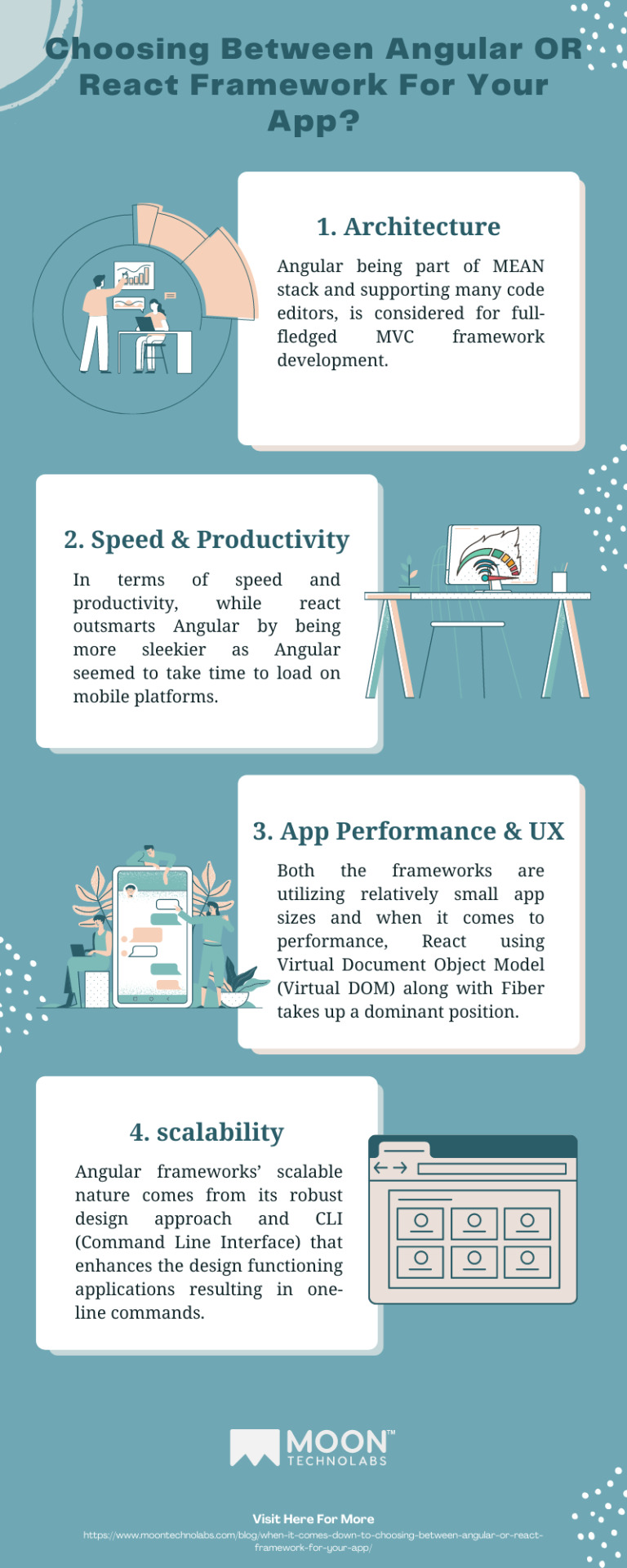
Angular framework and React framework have become popular in the list of the best development framework for 2022. In the discussion, which is better – React Vs Angular? Source: https://www.moontechnolabs.com/blog/when-it-comes-down-to-choosing-between-angular-or-react-framework-for-your-app/
0 notes
Text
Which JS Framework Your Project Requires: Angular vs. React 2022
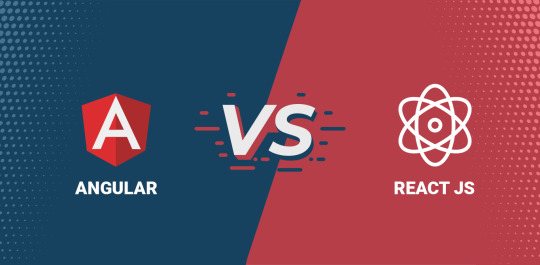
Web development has become necessary for every company that wants to enhance its digital presence. Everyone dealing with web application development must be familiar with angular JS and React JS.
We often get confused on selecting one of them as both are remarkable frameworks in their way. It would be better to understand what each one brings to the table before hiring a React JS developer or Angular JS developer.
Moving ahead in 2022, the development framework that offers speed and productivity will be the winner.
Let us understand their details to bring more clarity to choices and knowledge.
Introduction to Angular and React
Angular is an open-source web framework that has been created for developers to develop dynamic applications. It is a component-based framework that can be used to start small and scalable applications.
It is rich with libraries and features, apt to be used to build enterprise-grade applications. The angular team continuously does modifications to provide the developers with the latest features.
React is also a web development framework used for front-end development. Facebook maintains it. The declarative coding approach allows the developers to create complex and creative User Interfaces. Moreover, its UI components can be reused to attain faster application development.
Comparison: Angular vs. ReactJS
We will be comparing both development frameworks based on their features.
Performance: Angular development involves real DOM that works just fine for the development. The bi-directional data-binding adversely affects its performance. On the other hand, React uses virtual DOM, enhancing the application’s performance. The uni-directional data-binding process reduces the developer’s workload.
Scalability: Angular JS works on a modular architecture which is excellent for average applications that require limited scalability. React JS uses component-based architecture, which is used to scale the application to any limit without compromising on performance.
Learning curve: Angular JS is known to have a steeper learning curve than React JS. The latter can be a preferred choice for the new developers for its ease of learning.
Community: Angular JS enjoys lesser community support than React JS as it was accepted late by the developer community for its steeper learning curve. However, Google keeps updating the framework to make it developer-friendly.
On the other hand, react framework has a large community of developers across the globe. They keep on adding codes and documentation to the knowledge repository.
Self-sufficiency: Angular is a complete framework for software development. It can be said to be self-sufficient. Different functions such as data-binding, project generation, and dependency injections can be performed using the angular package.
On the contrary, React is a framework created explicitly for UI development. For the development of different functions, additional libraries are required.
App Structure: Angular has a fixed and complex structure that can be challenging for the new developers. The app structure of React gives the developers the freedom to choose. There is no rigid structure, and the developer needs to design it before starting the project.
Angular and React JS Use Cases
Read More
0 notes
Text
React Vs Angular: Which Front-end Framework Should You Choose and Why?
Quick Summary:
A comprehensive piece of comparison between the two most popular front-end frameworks- Angular Vs React. Learn about their differences based on factors like popularity, performance, learning curve, server-side rendering, and more.
Let’s find out how React different from Angular and which JS is more suitable for your front end development project. Let’s dig in Angular vs React in 2022.
Introduction
With the presence of a comprehensive list of super resourceful and capable options in the industry, selecting the right javascript framework becomes a tedious job today. It is because a variety of options caters to different project requirements. However, picking any framework does not do the job. It calls for a proper set of knowledge and critical aspects to determine whether the framework is suitable for your business or not.
Two such fine frameworks that we will discuss today are React and Angular. Although it is difficult to define and declare the best among the two, it is not difficult to analyze which works best in which situations. Isn’t it?
On that note, here’s an overview and distinction between the two most loved and preferred Frontend frameworks: React Vs Angular 2022. Having listed some of the significant points, we have tried making a fair comparison between the two. So, React or Angular? Let’s check!
An Overview on Angular Vs React 2022
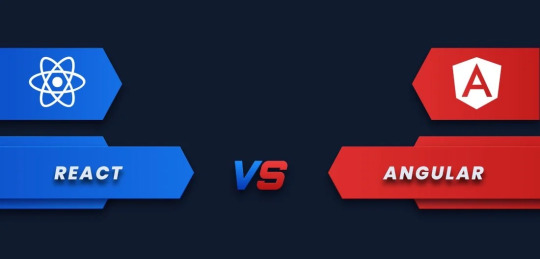
React and Angular are one of the finest frontend JavaScript-based frameworks. Of course, they both being frontend etchnologies, have a lot in common. However, this guide will discuss how they are disparate from one another. If you are a developer looking forward to starting a new project but are stuck on which framework to use, here’s your go-to guide. By listing a detailed distinction between the two amazing platforms, you can select the one that suits you best. Let’s understand the platforms individually to determine the ideal frontend framework.
What Is Angular?
Built on TypeScript, Angular is a component-based framework and a development platform used to build scalable web applications. To be more precise, Angular is an open-sourced JS framework to build interactive and fascinating mobile and web applications.
Angular has a wide range of well-grounded and well-integrated features libraries. To name a few, it facilitates excellent Angular routing, client-server communication, etc. It holds a vast array of developer tools to scale up and develop projects from one developer size to enterprise-grade apps.
Furthermore, Angular is continuously updated with all the advanced developments led by the Google Angular team.
Also known as Angular 2.0, Angular was launched back in September 2016. It is a comprehensive rework of AngularJS (Angular 1.0) that was brought into the market in 2010. If you are still wondering, how popular is Angular; here’s the tech aspect.
Technical Aspects And Statistics of Angular
License: MIT
Version: 11.2.0
Used By: 1.7 M
Stars: 70.7k
Forks: 18.6k
Contributors: 1350
Read more for Which is Best Angular or React
0 notes
Text
Why You Need to Know About Angular?
All You Need to Know About Angular
Angular 8 is making its place in the development market right now and Angular 9 is also here which is the major version of the Google-driven JavaScript framework. Though the Angular 7.0 is supported until April 2022. Business organizations, it becomes a crucial job to know about the new features of Angular 8.
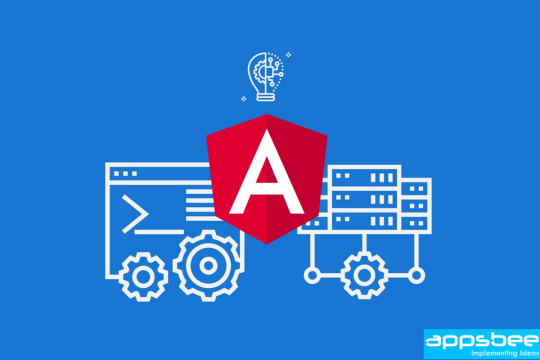
React is also a popular development tool and even in 2020 Angular vs. React is an important topic. Angular and React are both advanced and adopted JavaScript technologies. The number of single page application development tools are constantly growing, Billions of websites are available nowadays, according to some recent surveys the number of websites is more than 1.74 billion and this number is getting larger every day. In the case of web development so many platforms are available. Mobile App development also in the spotlight and a good mobile-friendly app always make customer experience best.
Google has built Angular and they had used Angular for building applications and websites like Google Cloud platform and Adwords also many internal tools.
About Angular 8 Update
Comparing from previous versions of Angularjs (Angular 7), version 8 has a lot more functional updates and performance advancement. Now developers have the opportunity to create modern-generation applications combined with CLI APIs web worker support, differential loading, and many more functions. Here is the list of Angular 8 feature updates.
Differential Loading
Dynamic imports for passive routes
Support for web worker bundling.
Support for location AngularJS API
The support enhanced for service worker
Ivy rendering engine.
Using SVG as a template
Bazel support
Builders API
Improvement on the support for typescript.
For templates they have improved type checking
Compilation is faster
Small size bundle
Debugged templates
What’s New in Angular 9?
Angular 9 is the latest version of Angular, and its size is much precise, the major problem with previous versions is their big sizes.
Angular 9 brought many new features but the most important is the Ivy compiler which provides a huge boost in performance. Here is the list of Angular 9 features.
The bundles got smaller now and the performance also got better.
Mainly the default use of the Ivy compiler which is the most important feature of Angular 9, this Ivy is designed to solve the major problems of Angular.
Internationalization support for Angular Ivy.
Support for more scopes in provided
Support for TypeScript Diagnostics Format
Angular Ivy got the selector-less binding support.
A New Type-Safe TestBed.inject() Method Instead of TestBed.get()
What Are The Business Benefits of Angular?
You can have the advantage of both business and development standpoints from Angular. Angular can work productively with various back end languages as well as combine business logic and UI. Angular is a robust, cost-efficient front end framework that will not only let you win a large number of audience but also make the productivity level high. Mobile App development companies are looking up for this one.

Cross - Platform Development
Angular not only provides web app solutions that also can run on across mobile platforms but also the framework is also used in native-like mobile applications. You can use Angular with TypeScript capabilities for services, dependency, injection, and even routing with that a developer can create a native-like UI. With the native script, the programmer will have access to native APIs. As a result you can have an app that can run on both iOS and Android. Even if you want to create both web mobile apps those will be two different projects.
Quality
Angular is difficult to learn to compare to other development tools. Developers should know about numerous structural elements which include injectors, components, directives, pipes, services, etc. For beginners, it can take time to learn. But the product success is big in this case, you can easily create anything you can think of with a comprehensive set of built-in features in Angular.
Improved Productivity
Angular is a developer-friendly language too, it has huger diversity like template syntax, instance, Angular CLI, routers, etc. This helps programmers work faster which increases productivity too. The framework is also compatible with so many back-end programming languages to display gathered data in the UI efficiency.
AngularJS in A Nutshell
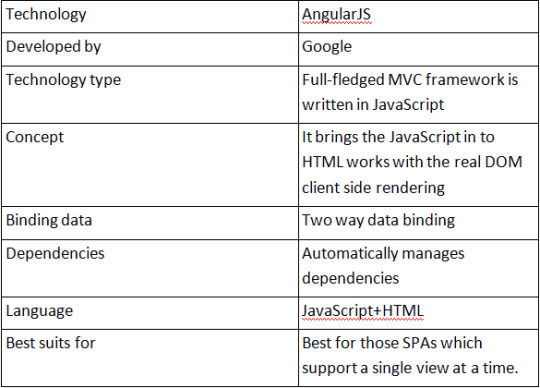
Ready to Use Solution
If you are facing any problem you can find ready to use solutions or modules are there to solve problems regarding Angular JS. Various structure applications also can be created as there is no blockade to the project structure in the case of Angular JS. You also can create hybrid applications. Mobile App development is really taking a turn by all these rich features of Angular JS.
Simple And Handy
Necessary services are easily loaded and also automatic testing can be done with the help of module separation. Angular JS also can be browsed from both desktop and mobile and it is one of reason which makes it more handy.

Data Binding
In Angular JS two way binding data is used, which means if anything change on the user interface it will influence the objects of the application and vice versa. Fundamentals patterns will be updated when there will be a change in the module or action of the user on the page. Though this same thing can’t be in the expectation list of other JS frameworks.
So many development tools are available nowadays, it is hard to find the perfect tool for development. Angular JS is an amazing development tool with all these features and benefits and it is also taking a huge place in the mobile app development too. Every business has different needs and with different needs, things can change and things will be different however it depends on how you use these instruments.
#mobile app development#development in utah#mobile app development utah#angular#angular js#custom app development in Utah
0 notes